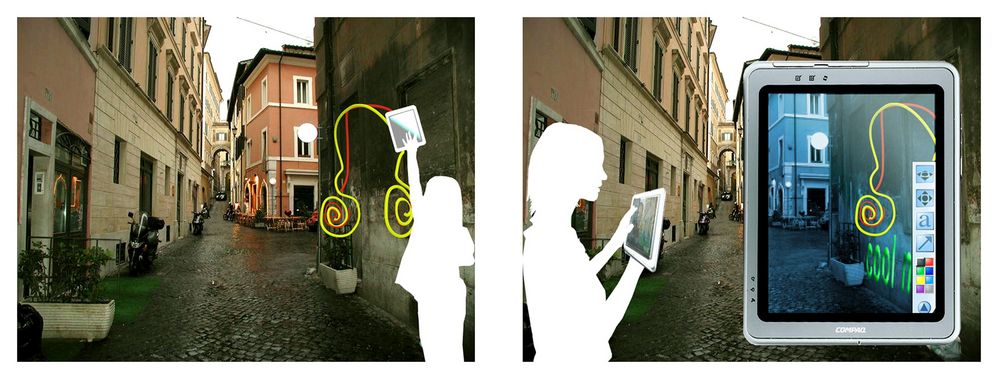| Funding | Industrial cooperation | ||
| Duration | 2003-2005 | ||
| Consortium | Johannes Kepler Universität Linz, AEC Future Lab, Siemens München | ||
| Role | Project partner, PI |

Digital Graffiti are messages that can be placed at any location in the real world and addressed to any recipients who are not only identified by (phone) numbers. They specify their visibility by time and are only perceivable in a given context. The content of a Digital Graffito can be smart.
Smartness within a Digital Graffito has different forms: Dynamic content: - Messages contain changeable elements, like a timer showing the remaining lifetime of a message. Influenced content: - The recipient himself can influence the content of a message, like in a poll where he changes the statistical results by his vote. Executable content: - Users are able to trigger actions through interactive elements or the Digital Graffito itself executes code when it is received.
Key Issues
Approach
The software architecture for smart elements within a Digital Graffito considers three fundamental aspects:
Conventional elements (e.g., text, pictures, video, music etc.) and smart elements can be arbitrarily combined within one message. No restrictions prevent the user from creating powerful messages.
The architecture enables third-party developers to easily design their own (smart) elements. As a consequence, the architecture provides an extensible framework structure which is prepared for deriving new elements from given templates.
Self-developed elements can be made accessible to all users without forcing them to download new versions of the client software or to restart their system. The users do not even recognize if an element has just recently been developed by a third party or if it is a basic element like plain text.